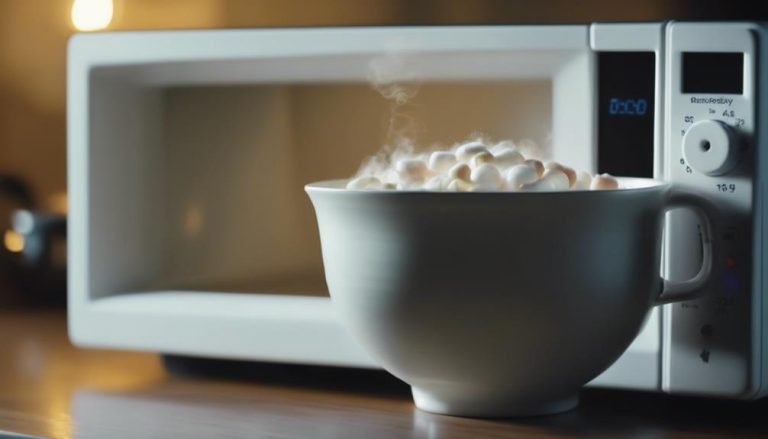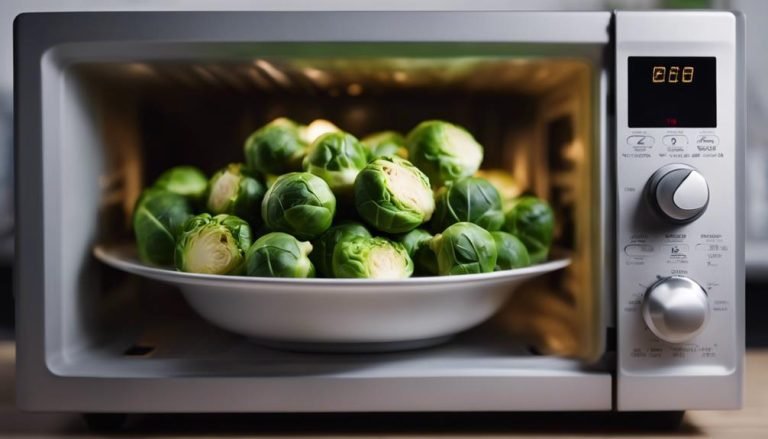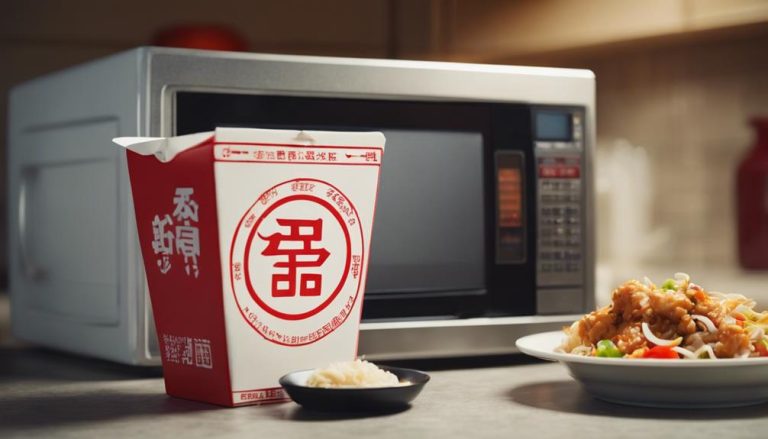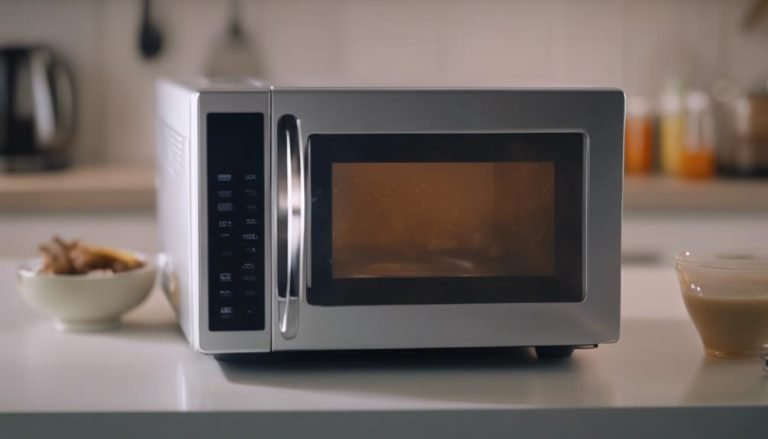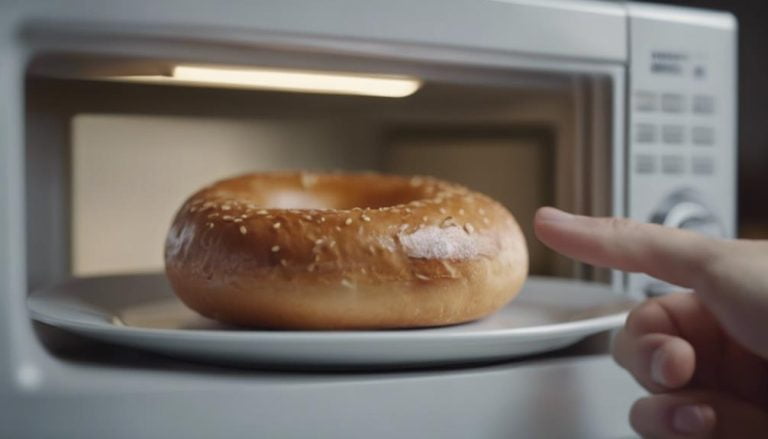Can You Microwave Bento Boxes
Yes, not all bento boxes are microwave-safe. The material composition, design, and heating guidelines play a significant role in determining if a bento box can be safely used in the microwave.
It is essential to understand these factors to avoid any mishaps and ensure that your meal is reheated both safely and efficiently.
Key Takeaways
- Check for microwave-safe labels and follow guidelines for plastic, glass, and stainless steel bento boxes.
- Avoid using wooden bento boxes in the microwave to prevent potential damage and chemical release risks.
- Prioritize safety measures like proper ventilation and adherence to recommended heating times.
- Choose the right bento box material based on safety, heating requirements, and compatibility with microwaves.
Microwave Safety of Different Bento Materials
When considering the microwave safety of different bento materials, it is crucial to prioritize heat resistance and manufacturer guidelines for optimal usage. Plastic bento boxes labeled as microwave-safe can generally be used for reheating food without concerns. These boxes are designed to withstand the heat levels typically experienced in a microwave, making them a convenient option for heating meals.
However, it is essential to verify the specific instructions provided by the manufacturer to ensure proper usage. While plastic bento boxes are suitable for microwave use, it is important to exercise caution and follow guidelines to prevent any potential risks associated with heating plastic materials. Always ensure that the bento box is labeled as microwave-safe before using it for heating purposes.
Understanding Microwave Heating Principles
Understanding the principles behind microwave heating is essential for efficient and safe food preparation in bento boxes. Different materials react uniquely to microwave radiation based on their composition and properties. When food containing water molecules is exposed to microwave radiation, heat is generated through the interaction with the water molecules, heating the food.
To ensure food is heated evenly and effectively, proper material selection for bento boxes is crucial. It is important to consider heat resistance and material safety when choosing a microwave-safe bento box to avoid any potential hazards. By understanding how microwave heating works and selecting appropriate materials, one can optimize the heating process and ensure food is safely prepared in bento boxes.
Pros and Cons of Plastic Bento Boxes

Plastic bento boxes offer a lightweight and convenient solution for daily meal preparation and storage. They are typically microwave-safe, allowing for easy reheating of meals. However, some plastic bento boxes may not be suitable for high-temperature settings in the microwave, so it is crucial to check the manufacturer's guidelines for safe microwave use. These boxes are generally affordable and come in a variety of sizes and designs. Below is a table highlighting the pros and cons of plastic bento boxes:
| Pros | Cons |
|---|---|
| Lightweight | Some not suitable for high-temperature |
| Convenient | settings in the microwave |
| Affordable | Need to check manufacturer's guidelines |
Glass Vs. Stainless Steel Bento Boxes
Glass and stainless steel bento boxes offer distinct advantages when it comes to microwaving. Understanding the material differences, heating performance, and safety considerations between these two options is crucial for selecting the most suitable bento box for your needs.
Let's explore how these factors influence the overall microwaving experience.
Material Differences Explained
When considering bento box options, the choice between glass and stainless steel presents distinct material differences that impact their suitability for microwave use.
- Glass bento boxes are microwave-safe, offering even heating and transparency for easy monitoring.
- Stainless steel lunch boxes should not be used in the microwave to prevent sparks or damage.
- Glass bento boxes are durable and do not release harmful chemicals when heated.
- Stainless steel bento boxes excel in cold food storage but are not suited for microwave reheating.
When selecting between these options, it is crucial to weigh your heating requirements and safety considerations to ensure the best choice for your needs.
Heating Performance Comparison
How do the heating performance and durability of glass and stainless steel bento boxes compare when considering their suitability for microwave use?
Glass bento boxes heat up quickly and evenly in the microwave due to their high thermal conductivity, ensuring that food is heated thoroughly. However, they are fragile and can break if exposed to sudden temperature changes.
On the other hand, stainless steel bento boxes may take a bit longer to heat up but retain heat well once warmed. They are more durable and resistant to damage compared to glass options, making them a long-lasting choice for microwave heating.
When deciding between glass and stainless steel bento boxes for microwave use, it's essential to consider both heating performance and durability factors.
Safety Considerations Addressed
Considering the safety aspects of using bento boxes in the microwave, the choice between glass and stainless steel containers becomes crucial due to their distinct characteristics.
- Stainless steel bento boxes are microwave-safe, while glass options pose a risk of shattering.
- Stainless steel containers offer durable and long-lasting alternatives for microwaving.
- Stainless steel bento boxes distribute heat evenly, ensuring thorough meal reheating.
- Glass containers may contain metal components unsuitable for microwaving, potentially leading to safety hazards.
When selecting a bento box for microwave use, opting for stainless steel provides a safer option for heating and meal preparation, offering reliability in heat distribution and eliminating the risk of breakage associated with glass containers.
Considerations for Wooden Bento Boxes
Wooden bento boxes require special care when it comes to microwave use.
Unlike plastic or glass boxes, wooden ones are not compatible with microwaves due to their susceptibility to damage and potential chemical release.
To maintain the integrity of wooden bento boxes and ensure safety, it is advised to avoid microwaving them altogether.
Wooden Box Maintenance
To maintain the quality and longevity of wooden bento boxes, it is crucial to adhere to proper care and maintenance guidelines. When it comes to wooden box maintenance, here are some essential considerations to keep in mind:
- Avoid using hot foods: Refrain from putting hot foods directly into the wooden bento box to prevent damage and preserve the box's structure.
- Regular cleaning: Clean the wooden box with a damp cloth and mild soap, ensuring it is completely dry before storage to prevent mold or warping.
- Avoid prolonged exposure to sunlight: Direct sunlight can cause the wood to fade or crack over time, so store the box in a cool, shaded area.
- Use food-safe wood oil: Periodically apply food-safe wood oil to maintain the box's finish and prevent it from drying out or cracking.
Microwave Safety Tips
Given the delicate nature of wooden bento boxes and the potential risks associated with microwaving them, it is imperative to prioritize safety and consider alternative reheating methods for food stored in these containers.
Microwave safety tips for wooden bento boxes include avoiding microwaving them due to the risk of splintering, warping, or catching fire. The heat from the microwave can also dry out the wood, leading to cracks over time and compromising the box's integrity.
To ensure the longevity and safety of wooden bento boxes, it is recommended to transfer food to a microwave-safe container before reheating. It is best to steer clear of exposing wooden bento boxes to direct heat sources such as microwaves to maintain their quality.
Tips for Safe Microwave Reheating
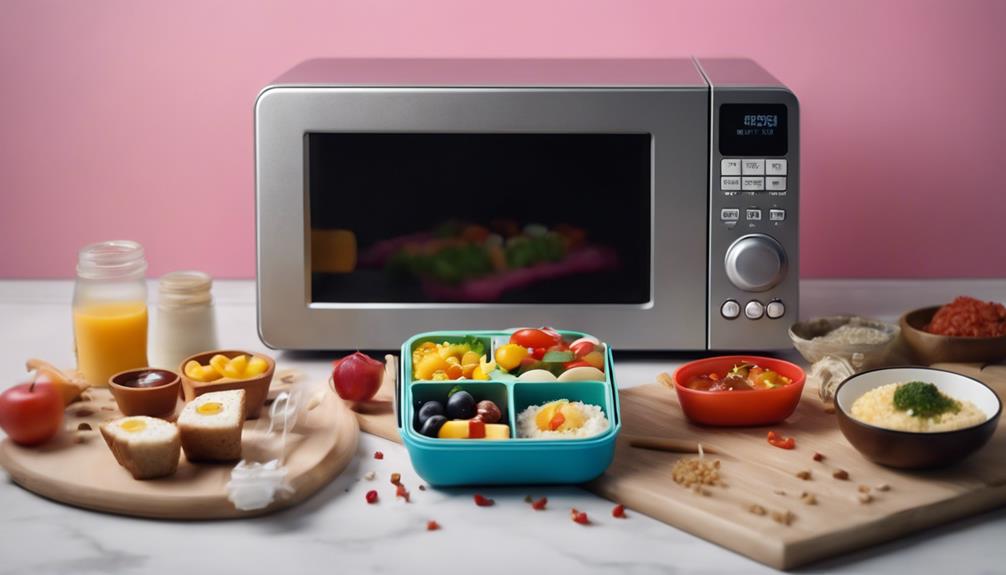
When reheating food in microwave bento boxes, it is crucial to follow recommended heating times to ensure safety and prevent potential damage. Here are some essential tips to guarantee a safe reheating experience:
- Limit Microwave Time: Microwave bento boxes for a maximum of 3 minutes to prevent overheating and potential plastic damage.
- Designed for Reheating: Remember that these boxes are specifically designed for reheating purposes and not suitable for cooking in the microwave.
- Adhere to Recommended Times: Always follow the recommended heating times to ensure safety and prevent food spoilage.
- Avoid Conventional Ovens: Never use bento boxes in a conventional oven as they are not designed for high-temperature cooking methods.
Guidelines for Heating Bento Boxes
For optimal safety and efficiency when heating bento boxes in the microwave, it is essential to adhere to specific guidelines provided by the manufacturer. Bento boxes designed for microwave reheating typically have recommended heating times to prevent damage to the container and ensure food safety. It is crucial to use bento boxes made from microwave-safe materials to avoid any risks during the heating process. Proper ventilation is also important; consider partially removing lids or ensuring there are vents to release steam while microwaving. Always refer to the manufacturer's instructions to determine if a particular bento box is suitable for microwave use. Below is a table summarizing key guidelines for heating bento boxes:
| Guideline | Description |
|---|---|
| Follow Recommended Times | Prevents container damage and ensures food safety |
| Use Microwave-Safe Materials | Crucial for safe heating |
| Proper Ventilation | Ventilate container or partially remove lids to release steam during heating |
| Check Manufacturer's Instructions | Ensure the bento box is suitable for microwave use |
Frequently Asked Questions
Can You Microwave Bento Boxes Made of Silicone?
Silicone bento boxes made of silicone are safe for microwave use. They offer efficient heating, withstanding high temperatures. Ensure the box is labeled as microwave-safe and follow recommended heating times. Avoid using them in conventional ovens for optimal results.
Are There Any Specific Precautions to Take When Microwaving Bento Boxes With Multiple Compartments?
When microwaving bento boxes with multiple compartments, prioritize microwave safety by ensuring all sections are open for even heating. Utilize heating techniques such as rotating the box and microwaving each section separately for optimal food preservation and reheating efficiency.
How Long Should I Microwave a Bento Box for to Ensure It Is Heated Evenly?
To ensure even heating, microwave a bento box for an appropriate duration, promoting safety while preserving food integrity. Follow manufacturer guidelines for optimal results. Distribute contents evenly for consistent warmth, avoiding oven use.
Can I Use a Microwave to Reheat a Bento Box That Contains Sauces or Liquids?
When reheating a bento box containing sauces or liquids, prioritize microwave safety by ensuring the box is made of suitable materials. Use proper reheating techniques, such as short intervals and open lids, to evenly heat the contents without compromising the meal's integrity.
Are There Any Types of Bento Boxes That Should Not Be Microwaved Under Any Circumstances?
Certain bento boxes, like those made of plastic, stainless steel, or wood, should not be microwaved under any circumstances due to potential hazards or damage. It is crucial to adhere to manufacturer guidelines for safe usage.
Conclusion
In conclusion, when it comes to microwaving bento boxes, it is essential to prioritize safety and follow the recommended guidelines for each type of material.
By understanding the principles of microwave heating and taking precautions such as avoiding overheating, you can enjoy the convenience of reheating your meals without compromising food safety.
Remember, when it comes to bento boxes, it's better to be safe than sorry.

